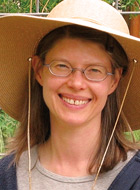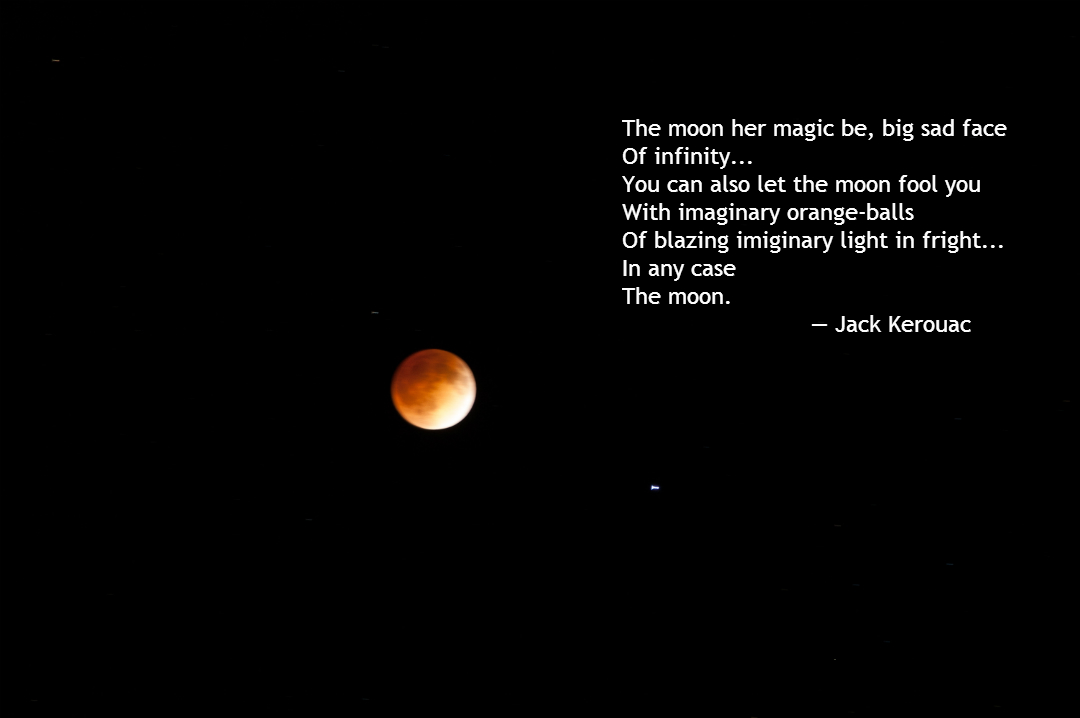Appreciating the “Extra-Special” Harvest Moon Eclipse — Sept. 27, 2015
By Andrea Schweitzer ~~~
The full moon of September is often called the Harvest Moon. This month
our full moon will be extra-special.
The Sun, Earth and Moon will be in alignment. When this happens, the Moon
moves through the Earth’s shadow and a lunar eclipse is visible from Earth.
On average, we see lunar eclipses about once every two and a half years.
When the Moon moves completely within the Earth’s shadow, it is called a
total lunar eclipse (as opposed to a partial eclipse). During a total lunar
eclipse, some of the light from the Sun still reaches the Moon, but is
filtered through the Earth’s atmosphere giving the light reflecting off the
Moon a reddish cast. (This is the same phenomenon that makes a sunset red.)
Currently there are wildfires creating smoke and dust in the atmosphere,
especially in the western United States. While it is unhealthy to have so
much smoke in the air, more particles in the air enhance this effect,
making it likely that the Moon will appear even more reddish during this
particular eclipse. (Hence, some people are calling this a “blood moon”
eclipse.)
More fortuitously, the Moon will also be very close to perigee, the point
in its orbit when the Moon is slightly closer to the Earth. The orbit of
the Moon is elliptical, not perfectly circular, which means that during the
month-long orbit the Moon gets slightly closer and then slightly further
away from the Earth. This month the Moon will happen to be at perigee
within the same hour as the eclipse! Because the Moon will be a bit closer
to Earth, it will appear to be larger in the sky. To us, it will look 14%
larger and 30% brighter, compared to when it is furthest away in its orbit
(at apogee). The closest full moon of the year, such as will happen this
month, is sometimes called a “super moon.”
Be sure to take a look at the Harvest Moon on the evening of September 27,
because it will be a beautiful combination of a total eclipse with reddish
color, while simultaneously being the nearest and brightest full moon of
the year.
At Shambhala Mountain Center in Colorado, the eclipse will happen from around 8:00 to 9:30 pm Mountain Daylight Time, will be hosting an evening of eclipse viewing as part of the Wisdom Rising program.
I hope that you can take time to slow down and enjoy our beautiful Moon,
from wherever you are. To find more information about the timing of the eclipse from your location, click here
To watch a great NASA video about this upcoming special lunar eclipse, click here
And, to read some heart-touching reflections on the experience of witnessing an eclipse, please read on.
Anne Lamott described her experience watching an eclipse in her book
Traveling Mercies:
“The eclipse moved in such peculiar time. Maybe it’s that I’m so used to
blips and sound bites, instant deadlines, e-mail. But the shadow of the
earth moved across the moon in celestial time, somehow slowly and
fleetingly at the same astronomical moment.”
Finally, a poem from Kathryn Worth titled “Lunar Eclipse”
Outside your shadow, I can go
A free moon in a crystal arc;
Circling at dusk with lunar cold
Above, below, your cone of dark.
Free in the ether I can pass
Made unaware of your perfection
Till outward-reaching like a shaft
Your shade encounters my direction.
Then always, as at startled first,
I pause to watch the moment come:
To feel your darkening image creep
Over the sky, across my face.
Let but your shadow touch this rim
And all my heart is in eclipse.
Shambhala Mountain Center hosts Wisdom Rising: An Exploration of the Divine Feminine in Buddhism, September 25-29. Click here to learn more.
~~~


